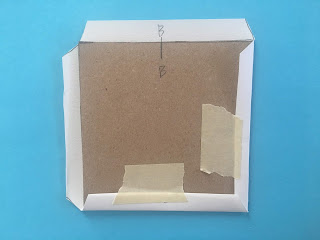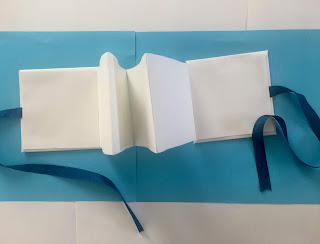Art Methods—Arts 130—Spring 2020
Coronavirus Version 3.0(Times to be announced: I will try for Wednesdays)
Professor Julia Schmitt Healy
http://artforteachersofchildren.blogspot.com
This is an even-newer, NEW, IMPROVED (NOT REALLY!) INTRODUCTION: I have changed several assignments for this semester. The Paper Mache Mask is out and I have eliminated any painting in acrylic. I have also changed the printmaking work and we will not fire and glaze our clay until the school is again open. Should the buildings be reopened, we would have much more access to materials, but I seriously doubt that is going to happen.
I have added weekly assignments to do in your sketchbook/journal, since that is now going to be 25% of your grade. I will be making a list of all assignments I expect to be finished by May 13 and give that to you shortly.
Introduction: This hands-on course will explore art materials and techniques for K-6 teachers. Students will learn how to develop age-appropriate lessons using collage, drawing, painting, printmaking and sculpture. Both stand-alone art projects and projects that integrate art with other subjects will be emphasized. Students will create a portfolio of their work and keep sketchbook/journals during the semester.
Course Objectives:
At the end of the course, students will:
•Be comfortable with a variety of art materials and techniques
•Understand how art lessons can drive academic learning
•Be able to analyze their own work and the work of others
•Have a broad understanding of art education concepts
•Know what is age-appropriate for the various elementary grades
•Have knowledge of the art elements, visual arts standards and principles of design
Attendance and Lateness: TBA
Grading: Individual grades will be given for projects and averaged together to make up 65% of your grade. Your written work and sketchbook/journal will count for 25% and attendance and participation at online meetings will count as 10% to total 100%. NOTE: THERE WILL BE NO MUSEUM TRIP OR PAPER.
Supplies: I handed out materials* (see below) to all students present on March 11. If you were absent, please contact me individually. You may want to choose receiving an INC and making up the assignments when you can, or you may want to use your own materials. The school has eased its incomplete rules and you have until December 23 to finish all work. I could not leave extra materials for you to pick up as they were closing the building.
CLASSES ALREADY GIVEN:
1/29 #1-Introduction and Syllabus
Group Lesson.
Medium: Oil Pastels.
2/5 #2- Bats by Jane Bates. What are the art elements?
Medium: Collage and Watercolor Resist
NO CLASS 2/12—QCC CLOSED.
2/19 #3-What are Visual Arts Standards?
Medium: Drawing Project—Shape Books—colored pencils
2/26 #4- Book Arts: Using Art for Academic Learning
Medium: Pop-Up Books—Mixed Media—sharpie marker, watercolor
3/4 #5-What does a Lesson Plan and Art Unit look like?
Medium: Pop-Up Books, as above
3/11 #6-Medium: Pop-Up Books, as above
_____________________________________________________________________________________________
3/18 CLASS CANCELLED FOR INSTRUCTIONAL RECESS
3/25
WEEK #7- What are Rubrics/Grading/Assessment/Peer-to-Peer Assessment?
Medium: Continue and finish Pop-up Books and covers
Sketchbook/Journal Assignment-Take a Line for a Walk
4/1
NO CLASS—RECALIBRATION PERIOD! Please work on any unfinished work, if possible.
4/7 (Tuesday)
WEEK #8- Classroom Management
Medium: Printmaking—Frottage & Collage
Sketchbook/Journal Assignment-Put a Secret in Your Sketchbook/Journal
4/8-4/10
SPRING BREAK PERIOD Please work on unfinished work, if possible.
4/15
WEEK #9- Creativity and teaching for artistic behavior
Mediums: Styrofoam Plate Drawing; Accordion Books Begun
Sketchbook/Journal Assignment-Make a Simple Zine Page That Demonstrates How to Do Something—Tying your shoes, Blowing Up a Balloon, Making a Cup of Tea, etc.
4/22
WEEK #10- Process Versus Product
Medium: Accordion Books and covers
Sketchbook Journal Assignment-Make a Cut-Through Page--Using two or more pages, cut through in some way to reveal something on the next page.
4/29
WEEK #11-Safety in the Art Room
Medium: Basic Clay Techniques—Pinch Pots, Coiled pots, Figures
Sketchbook Journal Assignment-Draw or Make a Collage in Which Something is Out of Scale
5/6
WEEK #12-Talking about Art, Sharing and Self-reflection
Medium: Paper Sculptures: Stuffed Fish and Recycled Works
Sketchbook Journal Assignment-Make a Cover for Your Sketchbook/Journal: Collage (or if you have Acrylic Paint), Paint or Use Mixed Media.
5/13
WEEK #13- Medium: Plaster Finger Puppets and Stick Puppets
Sketchbook Journal Assignment-Draw or Watercolor a Set Design for a Play Featuring Your Puppets
5/20
WEEK #14-Individual Critique by Appointment& Possible Group Share
"ACCOMMODATIONS FOR STUDENTS WITH DISABILITIES:
As stated in the current college catalog, any student who needs specific accommodations based on the impact of a disability should register with the office of Services for Students with Disabilities (SSD) to be eligible for accommodations, which are determined on an individual basis. The SSD office is located in the Science Building, room S-132 (718-631-6257). Students should also contact their instructor privately to discuss their specific needs."
_____________________________________________________________________________
*This is the list of supplies I gave each student:
Bristol Board sheets, as needed
2- 9 x 6” cardboards (for pop-up book cover)
Several sheets of 12 x 18” white drawing paper and/or construction paper
1-gluestick
1-eraser
1-pencil
1-sharpie marker
1 set of watercolors and a brush
1 Texture Plate
2-3 crayons
2- 4 ½” x 4 ½” cardboards (for accordion book covers)
A stack of white copier paper
Colored bond paper
1-styrofoam tray
A bag of plaster craft
A ball of clay
2-3’ of ribbon
Their watercolor/oil pastel resists-2 sheets, 12” x 18” each







